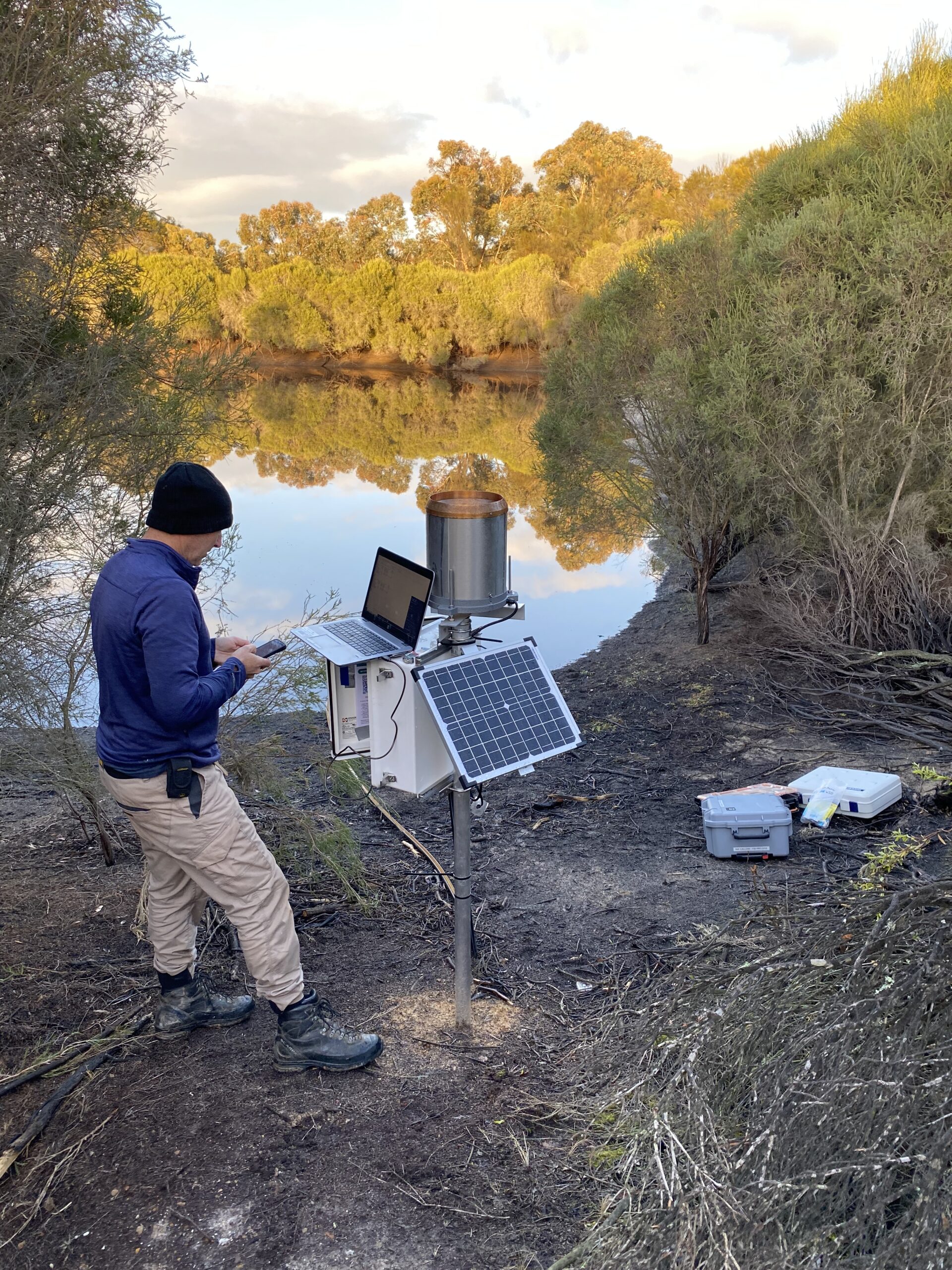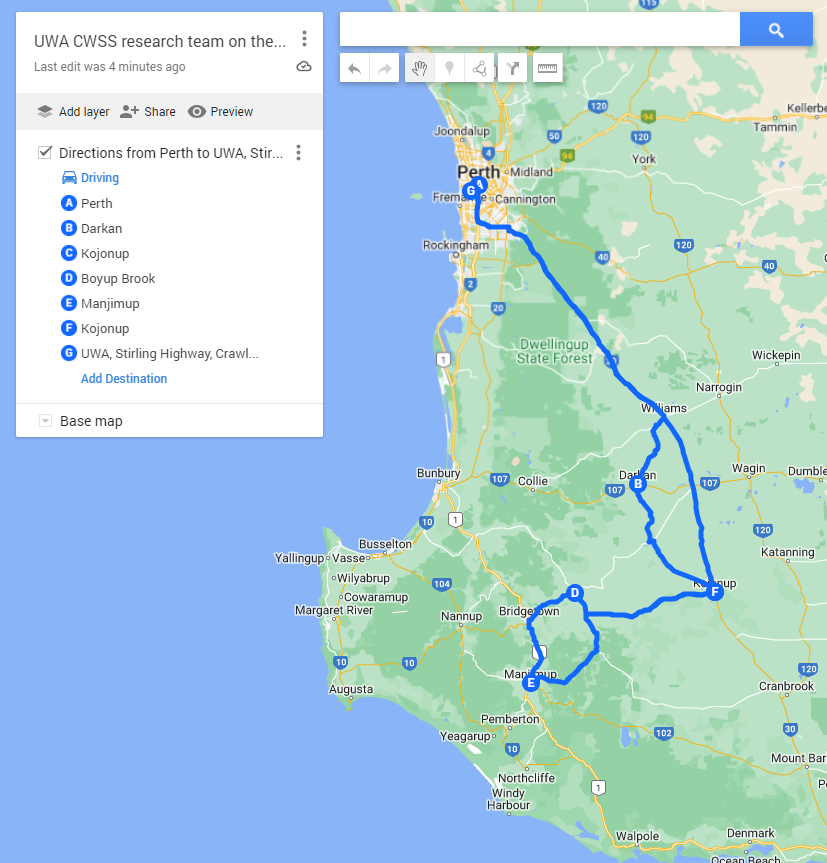WaterSmart Dams
UWA’s research team on the road for a WaterSmart Dams check-in
What’s happening at the WaterSmart Dams demonstration sites?
The University of Western Australia’s (UWA) Centre for Water Spatial Sciences (CWSS) team was on the road again last week for the WaterSmart Dams project, with plans to implement water monitoring equipment at more demonstration sites in the southwest region and collect observations from sites where equipment was already in place.
Various subsurface water harvesting of the winter rain events and evaporation solutions in the drier periods are being demonstrated by Compass Agriculture Alliance, Southern Dirt, and Fitzgerald Biosphere Group at the SmartDams Champion’s sites.
Project technical lead Associate Professor Nik Callow and Research Fellow Bonny Stutsel visited the sites to fit monitoring equipment to test other options to get more water into dams and keep it there once captured.
The demonstrated technologies at the sites were selected based on ground-up grower-led initiatives and an industry survey which captured the key priorities for the project.
Nik Callow said the most rewarding part of the project was working with the site hosts to get the numbers behind the locally developed demonstration sites.
“There is nothing more powerful than looking over the fence and seeing someone doing something new or different and their dams full of water,” he said.
Caption: WaterSmart Dams check-in journey map
“Hopefully the demonstration sites, plus new farm water planning tools can help give growers the confidence to invest in solutions that work for their farming district and own business.”
GGA Project Manager Daniel Kidd said it was important for the industry priorities to be reflected across the demonstration sites.
“Each of the implemented sites are seeking to capitalise on water capture, whether that be through run-off enhancement solutions such as roaded-catchments or the CBH tarpaulins at Jacup, dam enlargements for greater storage capacity, or subsurface water harvesting methodologies,” he said.
“Simultaneously they are testing evaporation mitigation using Daisy Dam covers.”

Caption: Nik Callow surveying instrumentation at the Ashton’s ‘oasis’ dam in Kojonup where they’re working with Southern Dirt looking at the role of vegetation in reducing evaporation. Image courtesy of UWA’s Centre for Water and Spatial Sciences (CWSS)
“It wasn’t just the volume of water captured and retained by dams but also the water quality that was raised as an issue in the survey,” Mr Kidd added.
Part of the project is also looking at whether water is fit-for-purpose.

Caption: Water Quality Samples for WA spraying operations
CWSS Research Officer Roberto Lujan Rocha has been surveying the water quality used for spraying operations across the Wheatbelt.
As part of the WaterSmart Dams project Merredin and Districts Farm Improvement Group (MADFIG) are working with Roberto Lujan Rocha to assess spray water quality and help growers to understand whether it matches recommended conditions for best herbicide efficacy.
While on the road the project team has had feedback from the Fitzgerald Biosphere Group about the Jacup site.
Nik Callow said that recent rain including some smaller and larger events was a chance to see how run-off from the catchment made from CBH tarpaulins at the Jacup Community Dam is working.
“While it has been great to see some good rains recently across most of the Wheatbelt, I was more excited to see that the catchment is running water into the dam on as little as 0.8mm rain events.”
Caption: The Jacup catchment flowing with recent rainfall events. Video courtesy of SmartDams Champion Mark Lester
“It’s encouraging to see the water flowing in a variety of rainfall events and great to have farming-scale demonstration sites such as the 0.6ha CBH tarpaulin catchment at the Jacup Community Dam site,” he said.
To find out more about the project technology and the efficacy of these water capture, retention and quality demonstrations visit the GGA WaterSmart Dams project page here.

